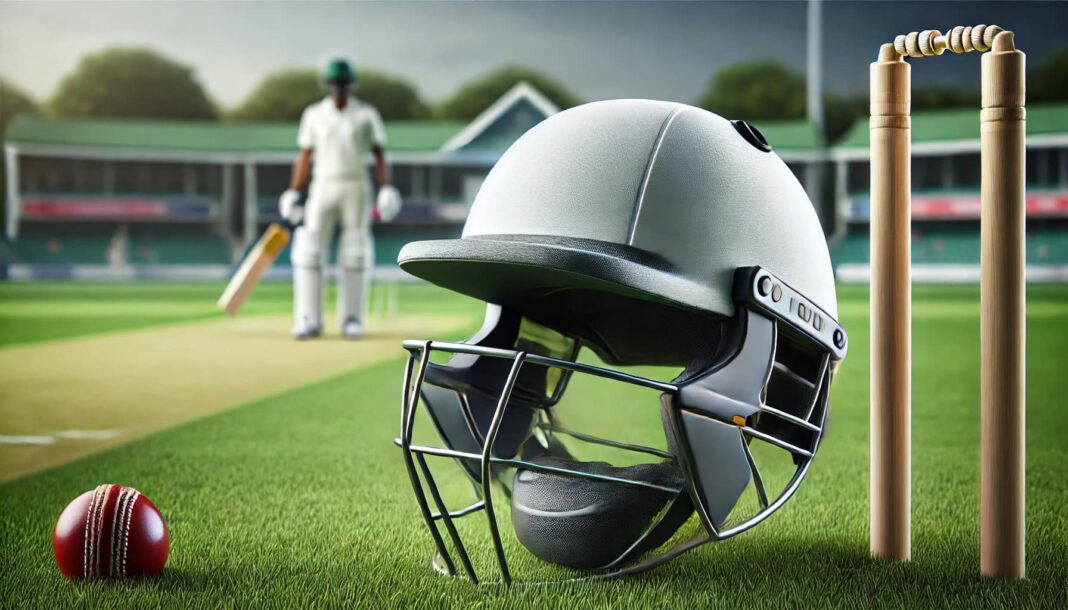Cricket is a thrilling sport that combines skill, strategy, and quick reflexes. However, with the intense speed and force of the ball, especially during bouncers or fast deliveries, the risk of injury is always present. That’s where the cricket helmet comes into play. This essential piece of protective gear is designed to keep players safe from head injuries, which are one of the most dangerous risks in the sport. In this blog post, we’ll explore the importance of wearing a cricket helmet, the different types available, and how to choose the right one for maximum protection and comfort.
Why is a Cricket Helmet Important?
A cricket helmet is crucial for protecting the head, face, and neck of a player. When a bowler delivers the ball at speeds exceeding 150 km/h (93 mph), it can be incredibly dangerous if the ball hits a player in the wrong spot. Injuries to the head can be life-threatening, ranging from mild concussions to serious trauma. Cricket helmets are designed to prevent such injuries by offering a sturdy outer shell, a well-padded interior, and a faceguard for protection.
The primary role of a cricket helmet is to absorb the impact of a fast-moving ball and reduce the risk of injury. It provides protection against direct hits to the head, as well as side impacts that can occur during fielding or batting. Players in positions like batsmen, wicketkeepers, and close fielders, who are more likely to face fast balls, should never compromise on wearing a helmet.
Types of Cricket Helmets
When shopping for a cricket helmet, you’ll find that there are several different types, each designed for specific playing positions or preferences. Let’s break them down:
1. Full-Face Cricket Helmets
A full-face cricket helmet offers the most comprehensive protection. These helmets cover the entire face with a metal or plastic faceguard, which is essential for shielding against bouncers or high-speed balls directed at the head. Full-face helmets are popular among batsmen and wicketkeepers because they provide maximum security.
Key Features:
- Full faceguard for facial protection
- Extra padding around the sides and back of the head
- Enhanced protection against fast balls and fielding accidents
Ideal For: Batsmen, wicketkeepers, and anyone who plays in close proximity to the batsman.
2. Open-Face Cricket Helmets
An open-face helmet offers less facial coverage than a full-face model, leaving the chin and face exposed. This type of helmet is preferred by some players for its lighter weight and better visibility, especially for batsmen who prefer an unobstructed view of the ball. However, it’s important to note that this type of helmet offers less protection to the face.
Key Features:
- Lighter weight for comfort
- Greater visibility and ventilation
- Less coverage for facial protection
Ideal For: Batsmen who prioritize comfort and visibility over full facial protection.
3. Custom-Fit Helmets
For those who are particular about comfort and fit, custom-fit helmets are available. These helmets are designed to be tailored to the wearer’s specific head shape, ensuring a snug and secure fit. Custom-fit helmets are often more expensive, but they provide an excellent level of comfort and safety.
Key Features:
- Personalized fit for better comfort
- Optimal protection based on individual head measurements
- Greater adjustability and ease of use
Ideal For: Players who want a more precise fit or those with specific head sizes.
4. Junior Cricket Helmets
Junior helmets are designed for young players. They are lighter, with smaller sizes and extra padding to protect against the speed and impact of the ball. It’s crucial to invest in the right helmet for children to ensure that they are as protected as adults during games and practices.
Key Features:
- Lightweight and adjustable
- Smaller faceguards and padding for younger players
- Designed to grow with the player
Ideal For: Young cricketers, from kids just starting out to teenagers.
Key Features to Consider When Buying a Cricket Helmet
When selecting a cricket helmet, there are several factors to keep in mind to ensure you’re getting the best protection and comfort. Here are some of the most important features to look for:
1. Material and Durability
Cricket helmets are typically made of high-quality materials like steel, plastic, or composite materials. The outer shell should be durable and capable of withstanding impact. High-quality materials ensure that the helmet lasts longer and provides consistent protection throughout its life.
2. Fit and Comfort
The helmet should fit securely but comfortably. A good fit prevents the helmet from shifting during play, which could leave parts of your head unprotected. Look for helmets with adjustable straps or padding that allow for a personalized fit. Many helmets also have breathable inner liners to keep the player comfortable in hot weather.
3. Faceguard Design
The faceguard plays a crucial role in protecting your face from high-speed balls. There are various designs, with some offering more coverage than others. Make sure the faceguard is made of strong material like steel or high-quality plastic and fits snugly to protect your face without obstructing your view.
4. Ventilation
Since cricket can be a physically demanding sport, ventilation is important for comfort. Many helmets come with ventilation holes that promote airflow and keep the player’s head cool during long innings.
How to Choose the Right Cricket Helmet
Choosing the right cricket helmet depends on your playing style, comfort preferences, and the level of protection you need. If you’re a batsman or wicketkeeper facing fast deliveries, you may want to opt for a full-face helmet for maximum protection. If you prioritize comfort and visibility, an open-face helmet might be a better option.
Make sure the helmet fits snugly and comfortably without being too tight. Also, always check for the relevant safety certifications, such as the ISI mark in India, to ensure the helmet meets the necessary safety standards.
Conclusion
A cricket helmet is not just an accessory; it’s a crucial piece of protective gear that can make all the difference when it comes to player safety. Whether you’re a professional cricketer or just someone who enjoys the sport for fun, wearing a helmet should always be a priority. With so many options available, from full-face helmets to custom fits, there’s a helmet out there for every player, regardless of their needs. So, next time you step onto the field, make sure to wear your helmet and play it safe—after all, your safety is the most important part of the game.



